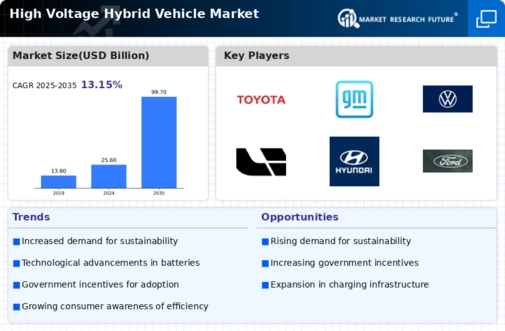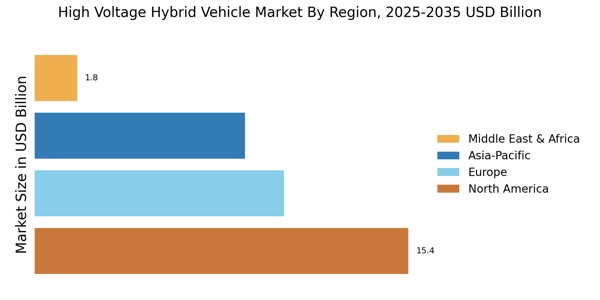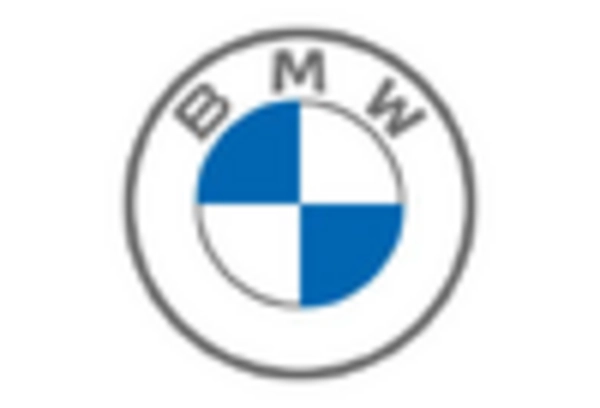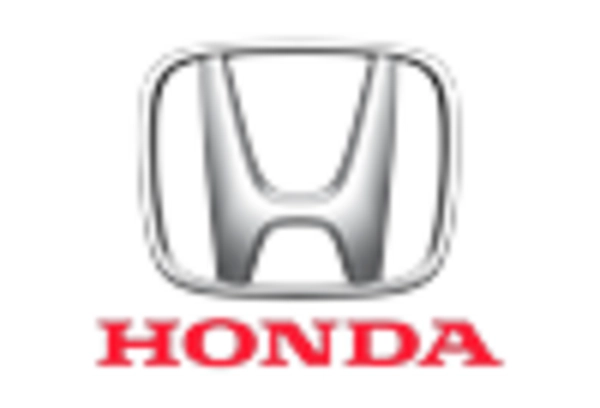Advancements in Charging Infrastructure
The High Voltage Hybrid Vehicle Market is benefiting from advancements in charging infrastructure, which are crucial for the widespread adoption of hybrid vehicles. The development of fast-charging stations and improved battery technology is making it more convenient for consumers to charge their vehicles. Recent data shows that the number of charging stations has increased by over 40% in the past two years, facilitating easier access for hybrid vehicle owners. This enhanced infrastructure not only supports the operational efficiency of high voltage hybrids but also alleviates range anxiety among potential buyers, thereby promoting market growth.
Rising Fuel Prices and Economic Factors
The High Voltage Hybrid Vehicle Market is significantly influenced by rising fuel prices and broader economic factors. As fuel costs continue to escalate, consumers are increasingly seeking alternatives that offer better fuel efficiency and lower operating costs. High voltage hybrid vehicles, which combine traditional internal combustion engines with electric propulsion, present a viable solution. Data indicates that hybrid vehicles can achieve fuel economy improvements of up to 50% compared to conventional vehicles. This economic incentive is driving consumer interest and adoption, as individuals and businesses alike look to mitigate fuel expenses while contributing to environmental sustainability.
Technological Innovations in Powertrain Systems
The High Voltage Hybrid Vehicle Market is experiencing a surge in technological innovations, particularly in powertrain systems. These advancements are enhancing the efficiency and performance of hybrid vehicles, making them more appealing to consumers. For instance, the integration of advanced electric motors and regenerative braking systems is improving energy recovery and overall vehicle performance. According to recent data, the market for hybrid vehicles is projected to grow at a compound annual growth rate of approximately 15% over the next five years. This growth is largely attributed to the increasing adoption of high voltage systems that provide better acceleration and reduced emissions, thereby aligning with global sustainability goals.
Government Policies and Environmental Regulations
The High Voltage Hybrid Vehicle Market is being shaped by stringent government policies and environmental regulations aimed at reducing carbon emissions. Many countries are implementing regulations that encourage the adoption of low-emission vehicles, including high voltage hybrids. For example, tax incentives, rebates, and grants are being offered to consumers who purchase hybrid vehicles. This regulatory landscape is fostering a more favorable environment for the growth of the hybrid vehicle market. Recent statistics suggest that regions with robust government support have seen a 30% increase in hybrid vehicle sales, indicating a strong correlation between policy initiatives and market expansion.
Consumer Preferences for Eco-Friendly Transportation
The High Voltage Hybrid Vehicle Market is witnessing a shift in consumer preferences towards eco-friendly transportation options. As awareness of environmental issues grows, consumers are increasingly inclined to choose vehicles that minimize their carbon footprint. High voltage hybrid vehicles, which utilize both electric and gasoline power, are perceived as a sustainable alternative to traditional vehicles. Market Research Future indicates that nearly 60% of consumers are willing to pay a premium for hybrid vehicles due to their lower emissions and fuel efficiency. This trend is likely to continue, as more consumers prioritize sustainability in their purchasing decisions.


















Leave a Comment